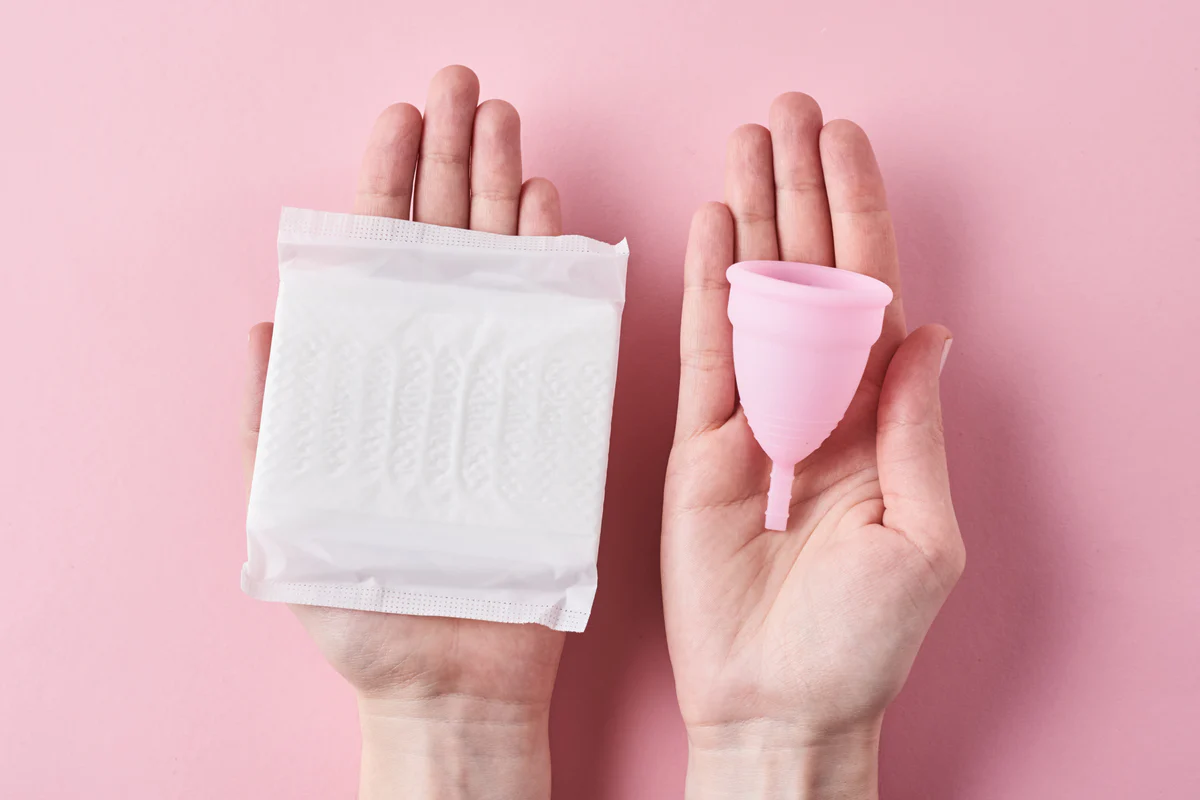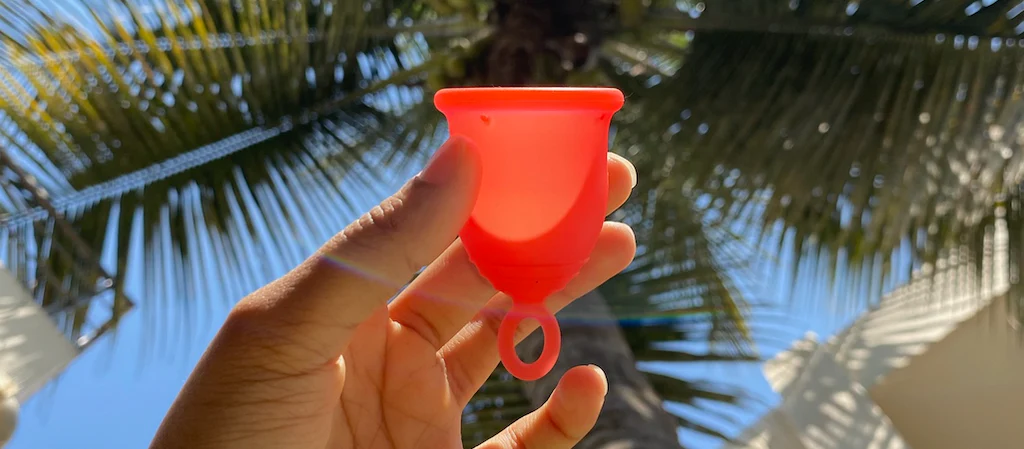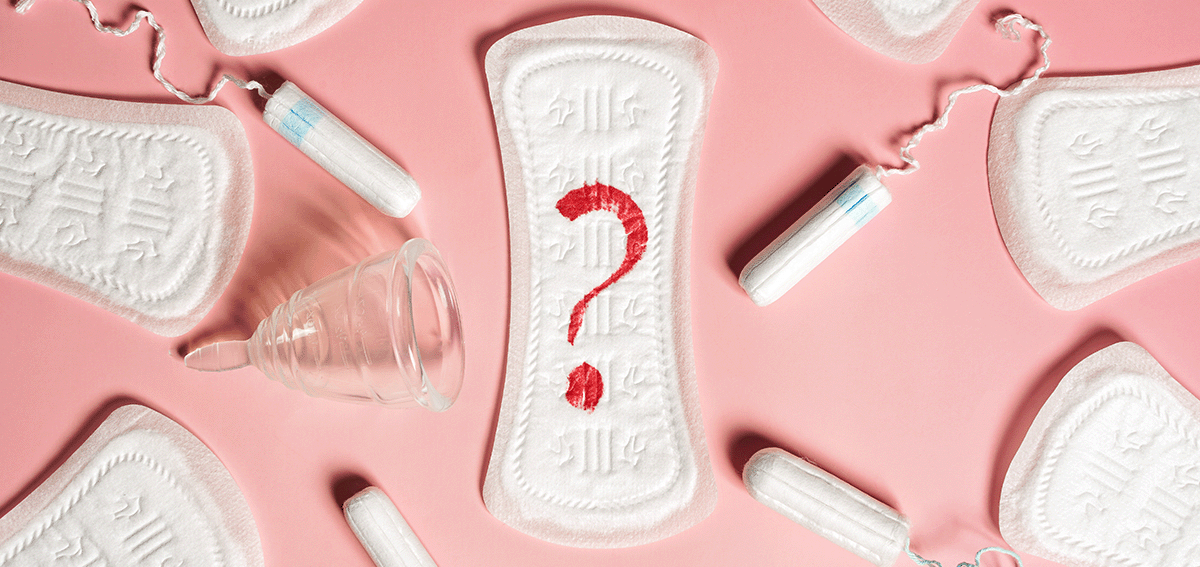Are you tired of constantly buying and replacing your sanitary pads? Looking for a more sustainable and cost-effective solution? Well, look no further! In this article, we will explore the advantages of menstrual cups over reusable pads. As an experienced woman who has tried both options, I can confidently say that menstrual cups are the superior choice. From their durability to their environmental impact, menstrual cups offer a range of benefits that make them the ideal choice for a healthier, zero-waste lifestyle.
Contents
- 1 Menstrual Cup vs Pads: Which is Better?
- 2 Pros and Cons Of Both Menstrual Cups and Pads
- 3 Menstrual Cups vs Pads: Comfort Compared
- 4 Environmental Impact Of Pads and Menstrual Cups Compared
- 5 Cost-effectiveness
- 6 Pads vs Menstrual Cups: Health and Hygiene Compared
- 7 One Menstrual Cup is Equal to How Many Pads?
- 8 Conclusion
- 9 Frequently Asked Questions
Menstrual Cup vs Pads: Which is Better?

Why are Menstrual Cups Considered Better than Pads?
When it comes to comparing menstrual cups vs pads, menstrual cups are often considered the superior choice for several reasons:
- Eco-Friendly: Menstrual cups are a more sustainable option as they are reusable and do not contribute to the growing waste problem caused by disposable pads. By using a menstrual cup, you can significantly reduce your environmental impact.
- Cost-Effective: While the initial cost of a menstrual cup may be similar to purchasing several reusable pads, the long-term savings are substantial. A high-quality menstrual cup can last up to 10 years, whereas reusable pads may need to be replaced more frequently. Investing in a menstrual cup can save you money in the long run.
- Convenience and Freedom: Menstrual cups offer more freedom and convenience compared to pads. With a menstrual cup, you can go up to 8 hours without emptying it, providing you with longer-lasting protection. This is especially beneficial for those with busy lifestyles or limited access to restroom facilities.
- Health and Safety: Menstrual cups are made from medical-grade silicone or latex, which means they do not contain bleach or harmful toxins like dioxin, often found in disposable pads. By choosing a menstrual cup, you can ensure safer and chemical-free period care.
- Comfort: Menstrual cups are designed to fit inside the vagina, providing a comfortable and secure fit. Unlike pads, they do not shift or move around, eliminating the risk of leaks and discomfort.
When comparing menstrual cups vs pads, menstrual cups have several advantages that make them a better choice for a healthier, eco-friendly, and cost-effective period care option. They are more sustainable, offer longer protection, and do not contain harmful chemicals found in disposable pads. Consider making the switch to a menstrual cup for a more comfortable and environmentally conscious period experience.
Pros and Cons Of Both Menstrual Cups and Pads
Menstrual Cups
Menstrual cups have gained popularity for several reasons, and it’s no surprise why. Here are the pros and cons of using menstrual cups:
Pros
- Eco-friendly: Menstrual cups are a more sustainable option compared to pads. They can be reused for up to 10 years, reducing waste and environmental impact.
- Cost-effective: Investing in a menstrual cup can save you money in the long run. Unlike disposable pads, which need to be purchased every month, a menstrual cup is a one-time purchase.
- Convenience: With a menstrual cup, you don’t have to worry about running out of pads or tampons. It can be worn for up to 12 hours, depending on your flow, providing longer-lasting protection.
- Health and safety: Unlike disposable pads, menstrual cups do not contain harmful chemicals that can cause irritation or allergies. They are made of medical-grade silicone or latex, which is safe for use.
Cons
- Learning curve: It may take some time to get accustomed to using a menstrual cup. Inserting and removing it correctly requires practice and patience.
- Maintenance: Menstrual cups need to be cleaned and sterilized between uses, which can be an extra step in your menstrual care routine.
- Availability: While menstrual cups are becoming more widely available, they may not be as easily accessible as disposable pads, especially in certain areas or countries.
Pads
Pads have been a go-to option for many years, offering convenience and familiarity. Here are the pros and cons of using pads:
Pros
- Ease of use: Pads are simple to use and require no special techniques or skills. They are readily available in most stores and can be easily purchased.
- Variety of options: Pads come in different sizes, thicknesses, and absorbencies, allowing you to choose the one that best suits your needs.
- Disposable: Once used, pads can be simply thrown away, eliminating the need for cleaning or sterilizing.
Cons
- Environmental impact: Disposable pads contribute to waste accumulation as they are not biodegradable. They end up in landfills, adding to the already growing environmental concerns.
- Potential for leaks: Pads can sometimes shift or move, leading to leaks and discomfort.
- Risk of irritation: Some pads may contain chemicals or fragrances that can cause skin irritation or allergic reactions.
As you can see, both menstrual cups and pads have their own set of advantages and disadvantages. The choice ultimately depends on your personal preferences, lifestyle, and environmental concerns. Consider these factors and make an informed decision that suits your needs.
Menstrual Cups vs Pads: Comfort Compared
When it comes to comfort, both menstrual cups and pads have their pros and cons. Let’s take a closer look at how they compare:
Menstrual Cups
Menstrual cups are known for their comfort and convenience. Once inserted correctly, you shouldn’t even feel it is there. The flexible, medical-grade silicone or latex material molds to your body, providing a secure and comfortable fit. Unlike pads, menstrual cups don’t bunch up or shift around, giving you a worry-free experience throughout the day.
Moreover, menstrual cups can be worn for up to 12 hours, depending on your flow. This means fewer trips to the bathroom and more freedom to go about your daily activities without interruptions. Whether you’re exercising, swimming, or simply going about your everyday routine, the cup stays in place, providing leak-free protection.
Pads
Pads, on the other hand, offer a familiar and easy-to-use option for many women. They come in various sizes, thicknesses, and absorbencies, allowing you to choose what works best for your needs. The soft, cushioned surface of pads provides a gentle and comfortable barrier between you and your menstrual flow.
However, some women find pads less comfortable due to their bulkiness and tendency to shift or bunch up. This can cause discomfort and irritation, especially during physical activities. Additionally, pads can sometimes cause leaks, which can be inconvenient and embarrassing.
The Verdict
In terms of comfort, menstrual cups have the upper hand. Their ability to mold to your body and stay in place for extended periods of time make them a more comfortable and hassle-free option. However, it’s important to note that comfort is subjective, and what works for one person may not work for another. Ultimately, the choice between menstrual cups and pads depends on your personal preferences and comfort level.
Environmental Impact Of Pads and Menstrual Cups Compared

When considering the environmental impact of menstrual products, it’s important to take into account both the production process and the disposal of these items. Let’s compare the environmental impact of pads and menstrual cups to see which option is more sustainable.
Pads
Pads are typically made from a combination of materials, including plastic, cotton, and wood pulp. The production of these materials requires energy, water, and resources. Additionally, the packaging of pads often includes plastic wrappers, which contribute to plastic waste.
In terms of disposal, pads are single-use items that end up in landfills. It’s estimated that the average woman will use around 11,000 pads in her lifetime, which adds up to a significant amount of waste. These pads can take hundreds of years to decompose, further contributing to environmental pollution.
Menstrual Cups
On the other hand, menstrual cups are reusable and made from medical-grade silicone or latex. This means they have a longer lifespan and don’t need to be disposed of after each use. In fact, a single menstrual cup can last for several years when properly cared for.
The production of menstrual cups also has a lower environmental impact compared to pads. The materials used are often more sustainable and require fewer resources during manufacturing. Additionally, since menstrual cups are reusable, they generate less waste overall.
When it comes to disposal, menstrual cups can be emptied, washed, and reused, significantly reducing the amount of waste that ends up in landfills. This makes them a more eco-friendly option compared to pads.
Conclusion
When considering the environmental impact of pads and menstrual cups, it’s clear that menstrual cups have a smaller carbon footprint. They are reusable, made from sustainable materials, and generate less waste. By choosing menstrual cups over pads, you can make a positive impact on the environment while also enjoying the comfort and convenience they offer.
However, the choice between pads and menstrual cups ultimately comes down to personal preference and comfort. It’s important to consider your own needs and preferences when making a decision.
Cost-effectiveness
Menstrual Cups
When it comes to cost-effectiveness, menstrual cups have a clear advantage. While the initial investment may be higher compared to pads, menstrual cups can last for several years with proper care. This means that over time, you’ll end up saving money by not having to purchase pads every month.
On average, a high-quality menstrual cup can cost around $20 to $40, depending on the brand and material. Considering that a cup can last for up to 10 years, the cost per year is significantly lower compared to buying disposable pads every month.
In addition to the long lifespan, menstrual cups also help reduce waste. As mentioned earlier, they are reusable and generate less waste compared to pads. This not only benefits the environment but also saves you money in the long run.
Pads
In terms of cost, pads may seem like a more affordable option upfront. However, when you consider the ongoing monthly expenses, the costs can add up over time. On average, a pack of disposable pads can cost anywhere from $5 to $10, depending on the brand and quantity. If you use pads every month, these costs can accumulate quickly.
Furthermore, pads are single-use items and need to be replaced frequently. This means that you’ll have to purchase pads every month, resulting in an ongoing expense. Over the course of several years, the cost of purchasing pads can surpass that of investing in a menstrual cup.
While pads may be more readily available and familiar, it’s important to consider the financial implications of using them in the long term. If you’re looking for a more cost-effective option, menstrual cups are the way to go.
By opting for a menstrual cup, not only will you save money over time, but you’ll also contribute to reducing waste and minimizing your environmental impact. Keep in mind that the initial investment is higher, but the long-term benefits make it a worthwhile choice.
Remember, when it comes to cost-effectiveness, it’s essential to consider the bigger picture and evaluate the long-term savings and environmental impact of your choice.
Pads vs Menstrual Cups: Health and Hygiene Compared
When it comes to health and hygiene, both menstrual cups and pads have their advantages and considerations. Let’s take a closer look at how they compare:
1. Menstrual Cups
- Menstrual cups are made from medical-grade silicone or latex and are designed to be inserted into the vagina to collect menstrual fluid.
- The smooth and flexible material of menstrual cups minimizes the risk of irritation or chafing.
- Unlike pads, menstrual cups do not contain potentially harmful chemicals or fragrances that can cause allergies or skin irritation.
- Menstrual cups are also less likely to cause dryness or interfere with the natural pH balance of the vagina, reducing the risk of infections.
2. Pads
- Pads are worn externally and are made of absorbent materials like cotton or synthetic fibers.
- Some pads may contain chemicals and fragrances that can cause skin irritation or allergic reactions in some individuals.
- Pads can create a damp environment, potentially increasing the risk of bacterial growth and infections.
- Regular changing of pads is essential to maintain proper hygiene and prevent odors.
It’s important to note that both menstrual cups and pads require proper cleaning and maintenance to ensure hygienic use. Menstrual cups should be emptied, rinsed, and sanitized between uses, following the manufacturer’s instructions. Pads should be changed regularly to avoid bacterial growth and discomfort.
When it comes to health and hygiene, menstrual cups offer some advantages over pads. They are made from materials that minimize irritation and do not contain harmful chemicals or fragrances. However, proper cleaning and maintenance are crucial for both options to ensure optimal health and hygiene during menstruation.
One Menstrual Cup is Equal to How Many Pads?

When it comes to comparing menstrual cups and pads, one question that often arises is how many pads are equivalent to a single menstrual cup. This is an important factor to consider, as it can help determine the cost-effectiveness and convenience of using menstrual cups over pads.
On average, one menstrual cup is equivalent to about 2-3 pads. This estimation can vary depending on factors such as flow intensity and personal preferences. It’s important to note that this calculation is based on the assumption that a single pad is used for approximately 4-6 hours before being changed.
The main advantage of menstrual cups in this aspect is their capacity. Most menstrual cups have a capacity of around 20-30 milliliters, which is significantly higher than the absorption capacity of a single pad. This means that a menstrual cup can hold more menstrual fluid before needing to be emptied or replaced.
Let’s break it down further:
- Light Flow: If you have a light flow, you may only need to change your menstrual cup 2-3 times a day. This would be equivalent to using 4-6 pads in total.
- Moderate Flow: For those with a moderate flow, you may need to empty and clean your menstrual cup 3-4 times a day, which would be equivalent to using 6-8 pads.
- Heavy Flow: If you have a heavy flow, you may need to empty your menstrual cup 4-5 times a day. This would be equivalent to using 8-10 pads.
By considering these estimates, you can see that using a menstrual cup can significantly reduce the number of pads you would need to use during your period. This not only saves you money in the long run, but also reduces the amount of waste generated from disposable pads.
It’s important to remember that these estimates are approximate and may vary from person to person. It’s always a good idea to have extra pads or panty liners on hand as a backup, especially during the initial transition period when you’re getting used to using a menstrual cup.
In the next section, we will explore the environmental impact of menstrual cups compared to pads.
Conclusion
When it comes to choosing between menstrual cups and pads, it ultimately depends on your personal preferences and priorities. Menstrual cups offer comfort and convenience, with the ability to stay in place for up to 12 hours. On the other hand, pads are easy to use but can be bulky and prone to shifting.
In terms of environmental impact, menstrual cups have a smaller carbon footprint compared to pads. They are also more cost-effective, as they can last for several years. Additionally, menstrual cups are made from materials that minimize irritation and do not contain harmful chemicals or fragrances.
Both options require proper cleaning and maintenance, but considering that one menstrual cup is equivalent to about 2-3 pads, depending on flow intensity, using a menstrual cup can significantly reduce the number of pads needed and save money in the long run.
Ultimately, the choice between menstrual cups and pads is a personal one. Consider your comfort, environmental impact, and cost-effectiveness when making your decision. Whichever option you choose, remember that it’s important to prioritize your health and well-being during your menstrual cycle.
Frequently Asked Questions
Do menstrual cups leak less than tampons?
Leakage is similar or lower for menstrual cups than for disposable pads or tampons, according to The Lancet.
How do you know when your menstrual cup is full?
When the menstrual cup starts to fill up, you may feel a slight pressure or discomfort. Empty the cup before it becomes too full, and check for leaks if you experience any.
Are menstrual cups or pads better?
Menstrual cups are more convenient, lasting up to 12 hours, compared to pads that require changing every 4-6 hours. Cups also eliminate the need to carry extra pads or tampons.
What is the disadvantage of menstrual cups?
Improper cleaning and care may cause vaginal irritation, while inserting the cup without lubrication can be uncomfortable. There may also be an increased risk of infection.
Do doctors recommend menstrual cups?
Experts recommend menstrual cups as they are environmentally and budget-friendly. Cups also maintain vaginal pH and eco flora, preventing vaginal infection.
I am a medical student with experience and interest in Women’s health and well-being.